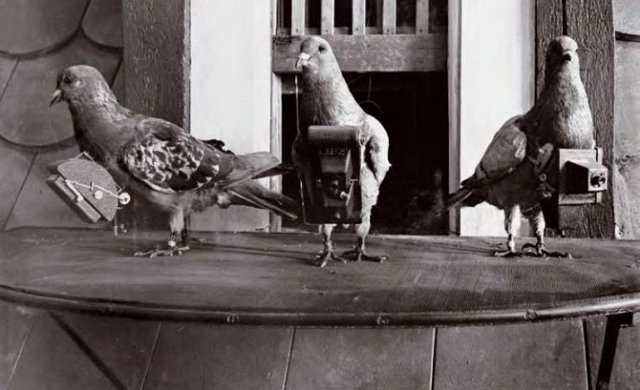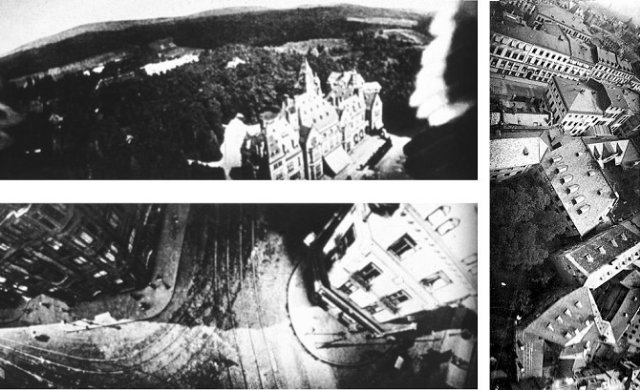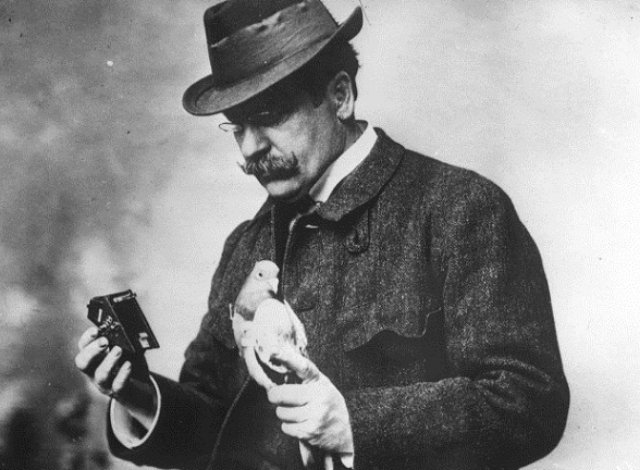In 1914, early on in the new Great War, one German inventor thought his way of taking photographs from the sky would be able to help the small number of airplanes available for the job. Back in 1907 Julius Neubronner had invented a small, automatic camera that could be strapped to a homing pigeon (these birds were already widely used by armies for carrying messages).
The camera would take photographs at pre-set times. According to our article, the idea was good enough that “the Prussian Minister of War has shown interest in the project and has put at Dr. Neubronner’s disposal birds from the military pigeon station at Spandau.”
Test image taken by a homing pigeon wearing a camera equipped with an automatic timer. The image is crude but clear enough that it could have been used to find troops, fortifications, supply dumps and so forth.
Soon, the rapidly evolving science of aviation was deemed better suited to aerial reconnaissance (spying), so the pigeon camera was not used in the Great War. In later decades, however, the CIA developed a “pigeon camera” (it’s on display in the CIA’s virtual museum) but its use remains classified.
From our issue of October 10, 1914:
“Military photographic ‘bird’s eye views’ have hitherto been obtained by means of balloons, kites, or rockets. Dr. Neubronner has discovered that they may be taken also with the aid of carrier pigeons. It is not easy to construct an automatic camera with a maximum focal length of 2 inches—and a maximum weight of 2 1/2 ounces, including all appurtenances, but the problem was finally solved by a Frankfort firm. One form of the apparatus comprises two complete cameras, with their lenses directed forward and backward, so that at least one land view is obtained when both plates are exposed simultaneously in any position of the bird. The cameras are mounted on a thin aluminium cuirass which is attached to the bird by straps and rubber bands.”
Source: Scientific American



